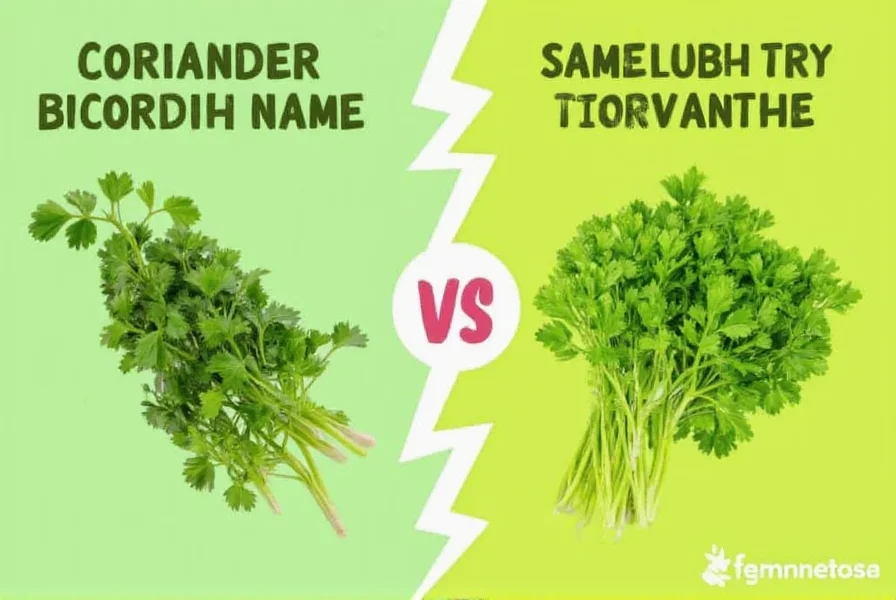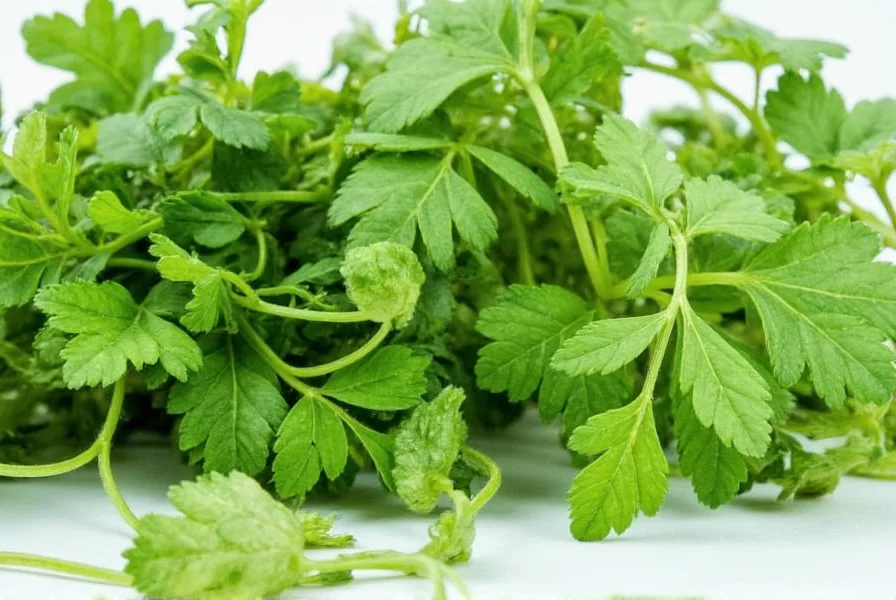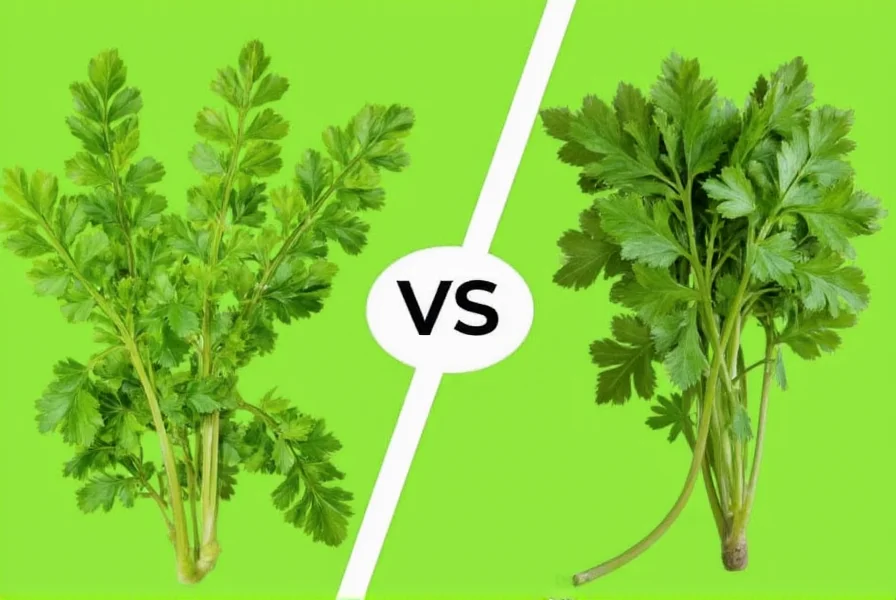Understanding the relationship between coriander and cilantro resolves a common culinary confusion that affects home cooks and professional chefs alike. Despite the different names, they originate from a single herbaceous plant in the Apiaceae family. The terminology discrepancy creates unnecessary shopping and cooking challenges when following international recipes.
Botanical Identity: One Plant, Two Names
The plant Coriandrum sativum produces both the leafy greens known as cilantro and the round, tan seeds called coriander. This annual herb grows to about two feet tall with lacy leaves and small white or pink flowers. When mature, it produces the characteristic spherical seeds that become coriander spice.

Regional Terminology Explained
The naming confusion arises from geographical language preferences:
| Region | Leaves/Stems | Seeds |
|---|---|---|
| United States and Canada | Cilantro | Coriander |
| United Kingdom, Europe, Australia | Coriander (leaves) | Coriander (seeds) |
| India and Asia | Dhaniya (leaves) | Dhaniya (seeds) |
This linguistic divide explains why American recipes might call for "cilantro" while British cookbooks specify "coriander leaves." When shopping internationally or following global recipes, recognizing this terminology difference prevents recipe failures and unnecessary grocery store confusion.
Culinary Applications: Leaves vs Seeds
While coming from the same plant, the different parts serve distinct culinary purposes:
- Cilantro (fresh leaves/stems): Offers a bright, citrusy flavor with subtle peppery notes. Essential in Mexican, Southeast Asian, and Indian cuisines. Best used fresh as cooking diminishes its flavor.
- Coriander seeds: Provide warm, nutty, slightly citrus notes when ground. Common in spice blends like garam masala, curry powders, and pickling spices. Often toasted to enhance flavor.
Substitution Guidance for Home Cooks
Understanding whether a recipe requires the leaves or seeds prevents culinary disasters. Many cooking mistakes occur when substituting one part for the other:
- You cannot substitute dried coriander seeds for fresh cilantro leaves in salsa—they have completely different flavor profiles and textures
- When a recipe says "coriander" without specification, check the regional origin of the recipe to determine if it means leaves or seeds
- Frozen cilantro leaves work better than dried as a fresh substitute, though flavor diminishes
Why the Different Names Exist
The word "coriander" entered English from the French coriandre, which derived from the Greek koriannon. Spanish adopted a variation as "cilantro," which entered American English through Mexican cuisine influence. This linguistic evolution created the modern terminology split between North America and other English-speaking regions.
Food historians note that early English settlers in America used "coriander" for both plant parts. The distinction emerged as Mexican culinary influence grew in the 20th century, creating the current naming convention where "cilantro" specifically denotes the fresh herb in American English.
Practical Tips for Recipe Success
To navigate recipes successfully:
- Check recipe origin—American recipes using "coriander" likely mean the seeds
- Look for contextual clues—"fresh coriander" means leaves, "ground coriander" means seeds
- When substituting, remember dried cilantro loses most flavor—better to omit than use poorly
- Grow your own plant to have both components available simultaneously

Common Misunderstandings in International Cooking
Many cooking forums feature questions about why a curry tasted "off"—often because American cooks used cilantro leaves when the recipe (from a British source) meant coriander seeds. This fundamental misunderstanding affects countless home chefs attempting international cuisine.
Professional chefs emphasize that recognizing this terminology difference represents basic culinary literacy. Understanding regional naming conventions prevents recipe failures and expands cooking capabilities across global cuisines.
Frequently Asked Questions
Can I use coriander seeds instead of cilantro in guacamole?
No, coriander seeds cannot substitute for fresh cilantro in guacamole. The seeds have a warm, nutty flavor while cilantro provides the bright, citrusy freshness essential to authentic guacamole. Using seeds would create an entirely different flavor profile.
Why do some people hate cilantro?
Approximately 21% of people have a genetic variation that makes cilantro taste like soap. This genetic trait affects how aldehydes in cilantro are perceived. Those with this trait often describe cilantro as having a soapy or metallic flavor, making recipes calling for fresh coriander leaves unpleasant.
How do I store fresh cilantro to make it last longer?
Treat cilantro like flowers: trim the stems, place in a glass with an inch of water, cover loosely with a plastic bag, and refrigerate. Change the water every two days. This method typically keeps cilantro fresh for 1-2 weeks, significantly longer than storing it dry in a container.
Is there a difference between coriander leaves and cilantro in nutritional value?
Both come from the same plant, so their nutritional profiles are identical. Fresh leaves provide vitamin K, vitamin C, and antioxidants, while the seeds contain dietary fiber, iron, and manganese. The nutritional difference stems from which plant part you consume, not from any botanical distinction between "coriander" and "cilantro."
Can I grow coriander at home to have both leaves and seeds?
Yes, growing coriander plants at home provides access to both components. Start with seeds (coriander), which will sprout into plants producing cilantro leaves. Allow some plants to flower and produce seeds for harvesting coriander spice. The plant typically completes its lifecycle in 45-70 days, making it suitable for container gardening even in limited spaces.











 浙公网安备
33010002000092号
浙公网安备
33010002000092号 浙B2-20120091-4
浙B2-20120091-4